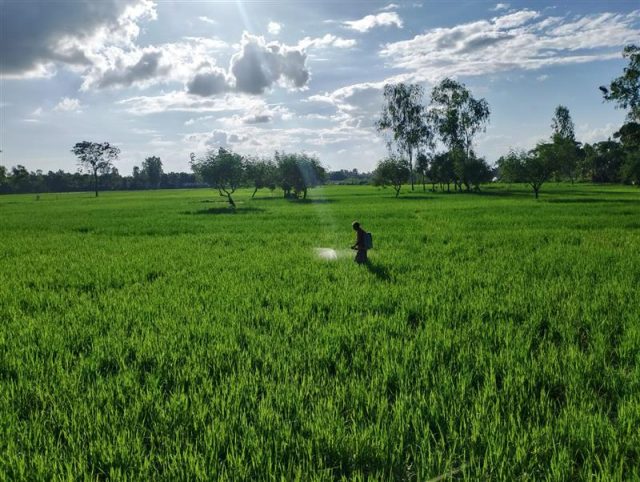Two years on, resilience innovations help food supply chains overcome COVID-19 disruptions
- From
-
Published on
23.02.22
- Impact Area

In the early months of the COVID-19 pandemic, lockdowns and other measures restricting the movements of people and goods led to disruptions in food value chains, particularly in low- and middle-income countries (LMICs)—quickly followed by a number of surprisingly rapid adaptations and innovations to keep food supplies flowing. What is the situation now, two years after the start of the pandemic?
Food value chains in LMICs have expanded and lengthened immensely in recent decades to serve rapidly growing cities while meeting rural demand. This made them more vulnerable to shocks— but rapid development in logistics, processing, and wholesale practices created more capacity to respond. As the pandemic has continued, innovations in e-commerce, worker benefits, and automation have helped to fill supply chain gaps.
Photo credit: Miklos Gaspar/IAEA
Related news
-

Reinventing Kenya’s Snack Future with Dryland Grains
International Crops Research Institute for the Semi-Arid Tropics (ICRISAT)21.11.25-
Nutrition
-
Poverty reduction, livelihoods & jobs
Faces of Impact - Video Feature Story On a quiet backstreet in Mihango, Kenya, the…
Read more -
-

Cultivating climate-smart rice: How specific cultivars and smarter fertilizing can cut emissions and maintain yield
International Rice Research Institute (IRRI)19.11.25-
Climate adaptation & mitigation
-
Food security
By Bushra Humaira Sadaf A team of researchers from the Bangladesh Rice Research Institute (BRRI), I…
Read more -
-

ICRISAT’s Solar-Powered Water Hyacinth Harvester Recognized Among India’s Top 100 Innovations of 2025
International Crops Research Institute for the Semi-Arid Tropics (ICRISAT)18.11.25-
Environmental health
-
Poverty reduction, livelihoods & jobs
ICRISAT's Novel Solar-Powered Water Hyacinth Harvester has now earned a place in the prestigious To…
Read more -
